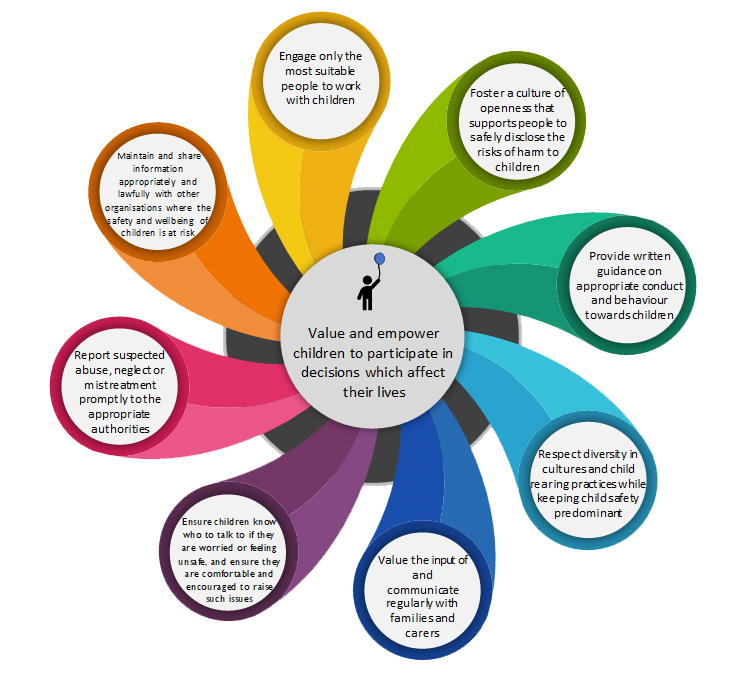This applies to all board members, sub-committee members, advisory councils and expert advisory groups, staff, students, interns, volunteers and commissioned providers.
NWMPHN has zero tolerance for child abuse
NWMPHN and our parent body Melbourne Primary Care Network aim to provide a child safe working environment where children and young people are protected, feel safe and have their voices heard about decisions that affect their lives.
Every person involved with NWMPHN has a responsibility to understand the important and specific role they play, individually and collectively, to ensure the wellbeing and safety of all children and young people.
Our child safety policy applies to all components of NWMPHN’s work, including the use of digital technology and social media.
Key principles:
NWMPHN is committed to all the National Principles for Child Safe Organisations. The key principles for this policy are:
- All children and young people are valued and treated fairly, regardless of ethnicity, culture, sex, gender, social, economic, religion and ability
- Ensuring children and young people are listened to and any concerns that they or their families raise are acted upon
- Ensuring that children and young people involved in activities and programs know what they can do if they feel unsafe
- Ensuring that children, young persons and their families know their rights and how to access the complaints procedures available to them
We meet NWMPHN’s Child Safe Code of Conduct by:
- Adhering to the NWMPHN’s Child Safe Policy at all times
- Taking all reasonable steps to protect children from abuse and harm
- Treating everyone with respect
- Working to prevent discrimination and actively promoting the participation and inclusion of all children and young people, recognising in particular:
- The cultural safety of Aboriginal children and young people
- The cultural safety of children and young people from culturally and/or linguistically diverse backgrounds
- The safety of children and young people with a disability
- Gender diversity and the safety of children and young people that identify as LGBTIQ
- Modelling appropriate adult behaviour
- Listening to children and young people and responding to their needs appropriately ensuring they feel heard on matters relevant to their safety
- Reporting any allegation of child abuse to the Chief Executive Officer (CEO) through the organisation’s clinical incident reporting workflow and ensuring any child criminal matters are referred to Victoria Police
- Working with children in an open and transparent way
- Empowering children to “have a say” and participate in matters that are important to them

National Child Safe Standards can be found on the Commission for Children and Young People website.




